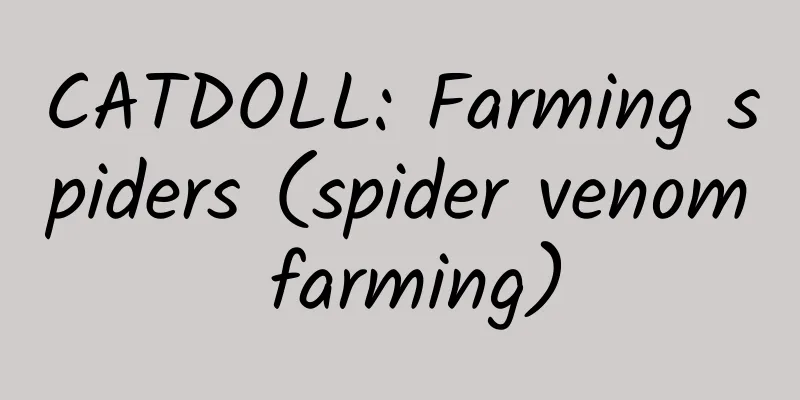CATDOLL : CATDOLL: Let’s talk about the bugs I’ve eaten over the years

|
PS: A few days ago, when I was chatting with my colleagues, I inadvertently mentioned the insects I had eaten before. They were surprised: "Wow! Can this be eaten?" I nodded: "Yes, not only is it edible, but it also tastes good." In their admiring eyes, I felt like a hero. In my hometown, the habit of eating insects has existed since ancient times. It seems to be a cultural heritage that has been passed down from generation to generation. Everyone eats it with relish and feels at ease. Recently, I sorted out the edible insects in my hometown and wrote an article, striving to popularize science and give a detailed introduction to these insects. My hometown is a small mountain village in Jieshi Town, Weihai City, Shandong Province. The name of the village is Hao Village. The village is not big, but it is a place with a long history and beautiful scenery. The village is backed by Kunyu Mountain and built along the east slope of the mountain. The winding Muzhu River flows through the middle of the village. There are large and small farmlands and lands scattered around the village. The villagers make a living by farming and planting fruit trees. They are hardworking and simple, and have lived there for generations. Kunyu Mountain is majestic and stretches for hundreds of miles, with mountains connected to mountains and mountains stacked up, and you can't see the end at a glance. The mountain is lush with vegetation, verdant trees, and a wide variety of animals and plants. Different products are produced in different seasons. Most of the children in our area are wild. When they were very young, they ran around in the fields. When they were a little older, they followed adults to the mountains and forests to dig wild vegetables and find medicinal herbs. Therefore, we know common animals and plants very well and enjoy it. Going up the mountain and going down the field in our spare time once became our favorite thing to do. As the saying goes, "live by the mountain and eat the mountain." Being close to the mountains, our diet is somewhat different from that in other places. The most distinctive one is the various edible insects. The climate near Kunyu Mountain is suitable, and there are many plants and trees. The unique natural environment has created a diversity of species. There are all kinds of insects growing on the mountains and farmlands. Although they are not good-looking, and some can even be described as ugly, once they are made into food, they become excellent delicacies. These insects feed on grass, trees and crops. According to modern people's concepts, they are green, environmentally friendly and pollution-free food. They are not only delicious, but also high in protein and various vitamins. They are also rich in a variety of trace elements needed by the human body. They have high edible and medicinal value and are of great benefit to human health. In my hometown, eating insects is nothing new. Eating different insects according to the seasons has become a trend in our area. In spring, the mountains and plains are full of bright insects; in summer, scorpions are the most beautiful, horse macaques are the most fragrant, and bean worms are the tenderest; in autumn, grasshoppers and crickets are the fattest; in winter, clams on trees are a rare delicacy... Next, I will introduce these insects to you one by one. Friendly reminder: some insects may cause visual and taste shock to some sensitive people, leading to physical discomfort, but they are indeed delicious. If you have the opportunity to try them, I believe you will love them. Let’s get back to the topic. 1. Silkworm pupae The most popular food in our area is silkworm pupae. During festivals or some important occasions, a plate of delicious fried silkworm pupae is always on the table. The adult of the silkworm pupa is the tussah moth, and the silkworm pupa is a changed form of the tussah moth during the metamorphosis process. There are many kinds of trees on Kunyu Mountain, among which the largest number are pine and oak. The pine trees are tall, luxuriant, evergreen all year round, covering every mountaintop, decorating the mountain with lush greenery, and in the gaps between the pine trees, there are many low oak trees growing. Oak is called "K-rosa" locally. K-rosa grows slowly, has hard wood, and has broad and thick leaves. K-rosa leaves are the only food for oak silkworms. Silkworms are constantly eating throughout their lives, and silkworm farmers need to frequently transfer them from one K. tussah tree to another. After more than twenty days, the silkworms spin silk cocoons and wrap themselves in them. A few days later, the silkworms transform into pupae, which can now be taken out and eaten. Silkworm pupae are high-protein food. When cooking, we choose to stir-fry or steam them. They should be taken out of the pot when they are 70% to 80% cooked. This will preserve their original taste to the greatest extent and at the same time prevent the loss of nutrients. Silkworm pupae taste sweet. Put the whole silkworm pupa into your mouth and take a light bite. The juice will splash and soon fill your mouth. Its unique fragrance will strongly stimulate the taste buds and give you a great sense of satisfaction. Silkworm pupae are high-end tonics and are often served as a special dish when we entertain guests. They play an important role on the dinner table. Many people are captivated by their delicious taste and do not forget to take two kilograms of them with them when they leave. 2. Clams Clam worms are the larvae of the oak beetle, a fleshy worm that grows in tree trunks and roots. They are most common in pine trees and K trees. The clam is as thick as a chopstick, with a black head and a milky white body. It moves slowly, and its body is made up of sections, plump and very cute. In autumn, the oak longhorn beetle lays its eggs in the tree body. In winter, the beetle feeds on the trees and hides in the trees to spend the cold winter, so it can only be found in winter. People in the mountains have the habit of storing firewood. In autumn, when the leaves fall and the mountains turn yellow, we go to the mountains to collect dead branches and roots of trees to prepare for the year. Winter in the north is cold, and this is the time when the largest amount of firewood is used. When chopping firewood, we often find clams in the firewood. Clams are delicious, and we will not let go even if there is only one. We put it on the stove and roast it over the fire. The aroma is fragrant. If we can make a small plate, it will be perfect for children to satisfy their cravings or as a snack for adults to go with wine. Chew it slowly and the fragrance will linger between your lips and teeth. Clams are hard to come by, and whether you can eat them really depends on luck. Once, when I was chopping wood with my uncle, a big and fat clam fell out. My uncle handed it to me and motioned me to eat it. I shook my head repeatedly as I watched it dancing and twisting its body. My uncle smiled and threw it directly into his mouth. While chewing, he said, "The taste of raw clams is similar to that of young bees in a hive, sweet." I have eaten young bees before. They are flesh-colored and motionless. They look like a piece of transparent gummy candy and taste like honey. But I don't have the courage to eat a live clam. After deep-frying, clams are crispy and delicious, and are a top-notch delicacy known as "wood ginseng". Many big hotels serve them as a "mountain delicacy". Clams are rich in nutrients, nourishing the yin and benefiting the liver, and are said to have the effects of prolonging life and maintaining health and beauty. 3. Instant light There is another kind of insect, which the locals call Jiqiliang (also called Huangliang). It belongs to a branch of beetles, but it is definitely not a dung beetle. It is an insect that eats leaves. Its entire body turns dark green, with only its antennae and limbs being black. It has a strong flying ability and is difficult to catch in flight. There is no consensus on its scientific classification. I guess it is a parasitic insect on apple trees because this insect can only be found under apple trees. The scorpionfish is a seasonal animal. It appears in mid-to-late April when the apple trees in the mountains are in bloom. At this time, there are many soybean-sized holes under the apple trees. The scorpionfish crawls out from these small holes. The evening is the peak time for the scorpionfish to be active. If you are lucky, you can catch a lot of them at the holes. Once they fly into the air, you will be powerless. The life span of the scorpionfish is very short, only about a month or so, and they disappear when the apple blossoms wither. I have seen many scorpionfish corpses, scattered under the apple trees, dried up and only the shells are left. The best way to eat instant noodles is to fry them. After a simple cleaning, put them directly into the oil pan. Sprinkle a handful of sugar after taking them out of the pan. They are fragrant, crispy and have a long aftertaste. The snapper usually comes out at night, so it takes some effort to eat it. I have caught it several times, and one of them left the deepest impression on me. At that time, there was a fruit industry team in our village, managing thousands of apple trees in the village. Most of the strong laborers in the village worked there. My father was a team leader in the fruit industry team. One year, he caught some apples that were instantly lit up. Since I ate them once, the taste has always fascinated me. So the next year when the apple trees were in bloom, I ran to the mountains with a few friends after school to catch insects. The flashlight emitted a weak light under the apple tree. We caught them from 5 o'clock to more than 8 o'clock and had a good harvest. After walking such a long mountain road and with an empty stomach, I felt bad. I thought that I would be praised by my parents when I got home, so the bad feeling was relieved a lot. Parents love their children, but they just express it in different ways. My father kicked me and I squatted on the ground. My mother yelled at my father and handed me a big bowl of noodles. Later I learned that they almost ran all over the village to find me. Early the next morning, a plate of fried insects was served on the table. I picked up a few for my father and mother respectively, and they gave me more in return. While eating the delicious insects, we smiled at each other, and an inexplicable feeling of emotion arose in our hearts. 4. Scorpion Insects are so delicious that people can’t stop eating them, but there is one kind of insect that makes me afraid, and that is scorpions. Scorpions are common in all parts of the country, and can be found in places with many rocks. Scorpions hide during the day and come out at night, prefer shade and fear the sun, feed on dew and small insects, come out from spring to autumn, and hibernate in winter. There are many scorpions on Kunyu Mountain. You may find scorpions by turning over a few rocks. Of course, not every rock will have a scorpion living under it. You will most likely find it under rocks with more sand and gravel near grass. Scorpions do not live in barren mountains or bushes. Catching scorpions requires special tools. Going barehanded is asking for trouble. The scorpion's tail sting is very toxic and will cause redness and swelling of the fingers for a week. If not treated in time, it may cause tissue necrosis. Making the tool is not complicated. Split the bamboo chopsticks along the front end, attach a small wooden stick near the middle of the chopsticks, and use a rope to fix the stick and chopsticks to make it look like tweezers. When you encounter a scorpion, just gently clamp it. It is convenient and safe. If we are lucky, we can catch thirty or forty scorpions in half a day. Scorpions like to live in nests, and there will be three to five or even more than ten scorpions in a nest. Usually we will catch the big scorpions and release the small ones. There are some hidden rules in all walks of life. Catching the big ones and releasing the small ones has important practical significance in the field of hunting and catching. Scorpions can be fried or eaten with fried eggs. Even if the scorpion is cooked to smell delicious, it takes a lot of courage to put it in your mouth, chew it slowly, and taste its flavor. I once ate a fried scorpion. The fragrance was mixed with a fishy smell, which was difficult to swallow. It was not what I imagined. Later, I heard that eating scorpions can improve sexual performance. At that time, I didn't know what it was. I thought it would cause some kind of harm to my body, so I was even less interested in eating scorpions. Since then, every scorpion I caught has become a snack for my father alone. There is a popular saying in our area: If you eat one male and one female wild scorpion from Kunyu Mountain in a year, you won't get boils all year round. Sometimes the wisdom left by our ancestors doesn't need scientific evidence, you just need to believe it. 5. Bean worms Among these insects, the largest and meatiest are bean worms. The bean worm is a variant of the bean hawkmoth, a mollusk that feeds on bean leaves and drinks nectar. It moves slowly and looks similar to a silkworm. When it matures, it burrows into the ground and emerges as an adult the following year. In our area, soybeans are an important crop, and the insects derived from soybeans are bean worms. During the soybean growing season, the bean fields are prosperous, with green bean leaves neatly arranged and swaying in the wind. When patrolling the bean fields, you can always find some leaves that are yellowing, whitening, or even being bitten to the point of being almost gone. In all likelihood, this is the work of bean worms. Turn over those diseased leaves, and you will see the fleshy bean worms. Bean worms are relatively common and the probability of catching them is very high. They are not rare on the table. Usually, if one or two are caught, adults will just throw them to the chickens in the yard. Only when there are a large number of them will they be cooked into a dish and served on the table. Bean worms are pure natural green food with high protein content. They are crispy and delicious after frying. They are a very seasonal delicacy. 6. Grasshopper Grasshoppers, also known as locusts, are distributed in most parts of the country. There are four common grasshoppers in our area. The first one to talk about is the most ferocious one among them. It is a fighter among grasshoppers. It is called "dengdaoshan" in the local dialect. From its name, we can know that it is majestic and domineering. The whole body of the Dengdaoshan locust is green and large, and its shape is similar to a human thumb. The Dengdaoshan locust likes to move alone, always lying alone on the ground or on branches, and never disdains to associate with other locusts. Its hind legs are strong and powerful, and its jumping ability is super strong. It can easily fly more than ten meters. It really takes luck to catch it. At the same time, its hind legs have a row of sharp serrations. If the arm or palm is accidentally kicked by it, the body will immediately bleed. Because the mountain-climbing fish is difficult to catch and has great lethality, we usually stay away from it. There is another kind of grasshopper that is smaller and slender, with beautiful pink inner wings. It jumps high and flies far and is extremely clever and sensitive. It is also the only grasshopper that makes a sound when flying. It is called "clicking scissors". The Gada Scissors are very drought-resistant, and the dog days of summer are when they are most active. If you hear a crisp "da da da" sound accompanied by a pink arc passing through the air while walking on the road, there is no doubt that the graceful "Gada Scissors" are showing off their muscles again. The grasshopper is too small and does not have much edible value. In addition, it is too troublesome to catch it, so it is not listed as an edible grasshopper. The other two types of grasshoppers are "saucy chicken" and "oily grasshopper". They are easy to catch, have delicious meat, and are crispy and tasty. They are frequent guests on the dining table. The scientific name of the Saoji is Trichodorus sinensis, a relatively large grasshopper with a green or gray body. It feeds on grass and crop leaves and is widely distributed in fields and farmland. The coot has only a pair of broad wings, and its flying ability is really poor. Its way of escaping mainly relies on the clumsy bounce of its hind legs and its own camouflage color. As long as you concentrate a little, it is easy to catch a coot. In comparison, the oil grasshopper has a much smaller range of activities. It lives in the grass near the river, which is related to its habit of liking moisture. The oil grasshopper is the most incompetent of all grasshoppers. It mainly relies on crawling on its front legs to move. Even if it encounters danger, it will not panic. It will still lie motionless on the grass, looking stupid and cute. Catching grasshoppers is the favorite thing for children in autumn. At that time, the grasshoppers that have been raised for a summer are growing fat, their stomachs are full of seeds, and it is the best time to eat them. They are everywhere in the fields and grasslands. The children are busy, some catching them with their bare hands, and some catching them with branches. It won't be long before everyone has a few strings of grasshoppers strung with dogtail grass in their hands and returns home with a full load. Running in the wild, we catch not only grasshoppers, but also happiness. Grasshoppers are usually fried. The meat is soft and tastes a bit like shrimp, with the aroma of grass. It is a rare delicacy. 7. Horse Monkey The horse monkey, also known as the cicada monkey, is the larva of the cicada, but they are very different in appearance and living habits. It is hard to imagine that the cicada is a weird, smart and extremely sensitive animal, while the horse monkey is a slow-moving, dull guy. I really don’t know what the horse monkey went through in the process of transforming into a cicada. It seems that its Ren and Du meridians were opened in an instant, and its health bar was full and its skills were full. It is no exaggeration to say that the hatching of the horse monkey is extremely difficult. At the end of summer, cicadas lay their eggs in the dead branches of trees. After the dead branches fall, only a small part of the eggs can be buried in the soil before winter comes. Only those eggs have a chance to survive. Cicada eggs suck the sap from the roots of trees underground, and only after two or three years will they have a chance to break out of the soil and become horse monkeys. The horse macaques crawl out of the ground at night in the summer and climb up the nearest trees as high as they can. Usually in the early morning, the horse macaques shed their shells and transform into cicadas. With wings, the cicadas are omnipotent and they run rampant throughout the summer. The village is filled with their sharp and long calls from morning to night, one after another, with great momentum. The only time to catch horse macaques is in the evening. Horse macaques have their own biological clocks, and they will come out of their caves one after another after the sun sets. You don't need to prepare special tools to catch horse monkeys. Just a flashlight and a small shovel are enough. In my hometown, there are a lot of elm and locust trees planted on both sides of the road and around the village. The best place to catch horse monkeys is under these trees. When passing a big tree, point the flashlight at the trunk and shine it around. If you are lucky, you can find a few horse monkeys on the trunk. In most cases, we need to dig the horse monkeys out of the soil. There are holes of different sizes under each tree, which are the passages for the macaques to climb to the ground. Digging macaques out of the soil is not a technical job, and being able to find the holes where the macaques are found is the most challenging part of one's ability. Some holes are very deep and the same thickness at the top and bottom, they are worthless, and the macaques here have already run away. There are also some holes that are thick at the bottom and thin at the top, and some are only the size of a mung bean near the ground. In these holes, macaques will soon break out of the soil, and at this time, you can touch the macaques' bodies by sticking your fingers in. Some cunning macaques will slide down the holes to the bottom of the caves, and you can find them by using a small shovel and shoveling away a dozen centimeters of soil. Catching macaques usually lasts until about 9 o'clock in the evening. At this time, all the macaques have come out of their holes, and those that have escaped have already climbed high up in the trees. The captured macaques need to be cooked as soon as possible. After overnight they will turn into cicadas, which have hard shells all over their bodies and taste very different from macaques. The horse monkey is a high-protein, pure green food. After being fried, it is crispy and delicious, and it leaves a lingering fragrance in the mouth. It was the signature dish of major restaurants in summer at that time. The price of the horse monkey was very expensive. Some restaurants could sell a horse monkey for a high price of one yuan. At that time, there was no artificial breeding technology for horse monkeys. The horse monkeys served in restaurants were all wild and caught by villagers. Every night, the stars were dotted under the trees in the wild, and the lights were shaking. This was a unique scene in our rural area in summer. 8. Cricket Cricket is an animal with a long history and is often mentioned in ancient books and modern film and television works. In our area, crickets don't have a strong presence, and their traces can only be found on a large scale in autumn. Autumn is the busiest season for farmers, as many crops mature at this time. In rural areas, corn is harvested around October. After the corn is picked, the corn stalks are cut down on the spot. Usually, the corn stalks are left in the field for a few days before being transported home. It is during these few days that the crickets use the corn stalks as their cozy nest. Catching crickets is very interesting and the children enjoy it. Just walk into a cornfield and turn over a bundle of corn stalks, and you will immediately see an amazing scene, just like poking a hornet's nest. In an instant, dozens or even hundreds of crickets will jump out of the corn stalks, making a "beep, beep" sound, and running away in panic. At this time, it is impossible to catch a cricket accurately, so just grab them randomly and you will always catch one. Crickets come and go quickly, and disappear without a trace in a few minutes. There are caves of various sizes in the ditches and ridges. They are the nests of crickets. They all hide in the caves. Use a small wooden stick or a finger to gently pry open the soil in the caves, and they will appear. At this time, the crickets are like lambs to be slaughtered, motionless and very honest. Apart from making chirps of varying lengths, they have no other ability. You can catch a few crickets from each cave. In less than half a day, the children's bottles were filled with crickets. They went home humming songs to show their success. At noon, a plate of delicious fried crickets was the best reward for them. In my hometown, there are a lot of crickets in the fields. They hide in caves during the day and come out at night. We rarely see them at ordinary times, so we don’t show much enthusiasm for crickets. Later I learned that Ningyang County, Tai'an City, is rich in crickets. Catching and buying and selling crickets has formed a complete industrial chain there. A large number of practitioners are involved in it, and new transaction records are being broken every year. It is said that the most expensive cricket in 2017 was sold at a sky-high price of 110,000 yuan. Every time I see such reports, I always feel sorry for our local crickets. They all eat grass and drink dew, so why do the crickets in Ningyang County enjoy such high courtesy, while our crickets are ignored and can only be eaten on the plate? Moreover, our crickets can blow the sea breeze from time to time and look at the majestic mountains from afar. They are naturally more heroic than the inland crickets in temperament. If they fight on the battlefield one day, the chances of winning are still unknown. I intend to bring the crickets from the two places together for a competition, so that our crickets can kill their sharpness with their iron beaks and steel teeth. 9. Pine dog pupa The pine caterpillar pupa, also known as the pine caterpillar pupa, is a transitional form of the pine moth. Its predecessor is the pine caterpillar that feeds on pine needles. The pine caterpillar does not look cute, and can even be described as terrifying. Its body is covered with poisonous needles. If you are accidentally stung by it, the affected area will itch extremely, and it will be so uncomfortable that you will doubt your life. Pine caterpillars are the natural enemies of pine trees. In normal years, a natural balance is maintained between pine caterpillars and pine trees. Once this balance is broken, it means disaster. I remember that in the 1990s, there were two years when pine caterpillars were rampant on the mountains. Many pine trees were eaten up and only a few were left. The green mountains gradually became barren. The situation was urgent, so village cadres mobilized villagers to carry out a pest eradication campaign. For a time, every household went out to catch insects all over the mountains. Because the pine caterpillar is so poisonous, people have to be fully armed. Long clothes and long sleeves are necessary, and gloves and hats are also indispensable. During the pest eradication campaign, people unexpectedly discovered that pine dogworm pupae were simply a delicacy. The taste of pine dogworm pupae was much better than that of silkworm pupae, which for a time stimulated people's enthusiasm to go up the mountain to catch insects. The pine dog pupa that you picked cannot be eaten directly, and you need to treat it with fire in advance. The cocoon of the pine dog pupa is very thin, and it is covered with poisonous thorns. When it encounters fire, it will burn out quickly, and the pine dog pupa will fall out. After a simple cleaning, the pine dog pupa can be put into the pot. The most classic way to eat pine dog pupa is to fry it. After rolling in the oil pan, the fragrance of the pine dog pupa is fully released, and at the same time, its body also has the pine resin of the pine tree. When you eat it in your mouth and chew it slowly, it is crispy and delicious, with a fragrant aroma and a long aftertaste. After two years of frantic picking, the pine dogwood pupae have disappeared from our area, and no one has found any trace of them for many years. This delicacy has slowly faded from people's sight. However, driven by the demand for game consumption, in recent years, it has been heard that some businesses have purchased pine dog pupae from Huludao, Liaoning and other areas, and cultivated and raised them locally, hoping that one day this delicacy can be served on the table again. There are many long-lived people in our area, and there are many elderly people over 80 years old. The reason is that in addition to the unique natural environment, the green food produced in the farmland is very helpful to human health, and the insects regarded as treasures by the villagers play a more important role in it. Insects are food and medicine. There is a real case about this. When I was very young, there was a man in his forties in the village. He had cancer and the doctor said he could live for a year at most. Folk remedies can cure serious diseases, which is sometimes true. An old man told him that eating grasshoppers can cure cancer. He was overjoyed. He ran to the wild to catch grasshoppers whenever he had nothing to do and ate them raw. Later, it was said that he died of old age and lived to be over 70 years old. With the acceleration of urbanization, the population is constantly moving to cities and towns. The countryside, which was once full of vitality and vigor, is slowly becoming a thing of the past. The decline of the countryside is an indisputable fact. I once thought that those delicious insects would gradually be forgotten by people, but fortunately, this is not the case. As a unique food, they are favored and loved by more and more people, thanks to the local government and the charm of the insects themselves. In recent years, the characteristic tourism and catering industries have developed rapidly in my hometown. The town government has increased investment and support, and has successively cultivated a number of local economic tourism projects such as "Jieshi Cherry", "Kunyu Mountain Farmhouse Banquet", "Kunyu Mountain Insect Banquet", etc., which have attracted tourists from far and near. Among them, the "Insect Banquet" includes traditional fried scorpions, boiling oil monkeys, fried grasshoppers, salty fried instant noodles, fried bean worms, fried clams and other dishes, which are undoubtedly the best for mountain people to entertain guests. Of course, some insects are no longer wild game grown in the natural environment, but are the product of artificial breeding. Even so, it is a good thing that these delicacies can be passed down, no matter what form they take. Let me talk about me. I am a nostalgic person. I have been away from home for many years. I haven't enjoyed those tempting insects for a long time. The more I can't eat something, the more I miss it. This feeling has become stronger in the past two years. Tasting delicious food is not only about the taste, but more of a memory. The memory of eating insects remains in my heart, and the taste remains on the tip of my tongue. Whenever I think of them, my teeth will keep chewing, saliva will slowly be secreted, and my throat will involuntarily make a swallowing movement. It seems that they have always been in my mouth, and although many years have passed, they have never left. postscript: When I was writing this article, my thoughts kept drifting in the fields, the green mountains and clear waters, as if I was still that happy boy, that sunny boy. These memories are long gone, buried in the rolling tide of the times, mottled and yellowed. But these memories are so precious. Every time I think of them, I feel refreshed and calm inside. It is like an oasis of happiness in the boundless desert and the only quiet harbor in the stormy waves. Everyone has a way to go. At the beginning of the road, there are birds singing and flowers blooming, and we live there without worries. We are originally happy and sunny people, but along the way, our hearts are occupied by various desires, filled with selfish thoughts, troubled and exhausted. This may be the price of growth. Look back often. In the noisy and complicated world, leaving such a happy oasis and quiet harbor in the depths of the soul, this feeling is good, isn't it? |
<<: CATDOLL: Looking for the secrets of raising silkworms..
>>: CATDOLL: What conditions are needed for fly farming and how to choose a site
Recommend
CATDOLL: What to use to breed snails (What is the best way to breed snails)
1. What are the methods and techniques for breedi...
CATDOLL: Pig pen management strategy: How to effectively avoid fighting between pigs
introduction Pigs are one of the most important a...
CATDOLL: Firefly Feeding (Firefly Feeding)
1. What are the detailed methods for feeding fire...
CATDOLL: The difference between porcupinefish and pufferfish
1. The difference between porcupine and pufferfis...
CATDOLL: How many loaches can be raised in one acre of land?
One acre of land can raise 400,000 to 500,000 loa...
CATDOLL: There is something white on the goldfish
The white stuff like spider webs on the goldfish&...
CATDOLL: What are the sales channels for locust farming?
There are two main sales channels for locusts. On...
CATDOLL: How to raise silkworms (How to raise silkworms)
1. How to raise silkworms? Silkworm breeding meth...
CATDOLL: The secrets of crab models in 2017! How to accurately identify the species of crabs?
Types and varieties of crabs As the best seafood,...
If you step on a cat, will it hold a grudge?
If you accidentally step on a cat's foot and ...
CATDOLL: What soil is good for snails to live in?
1. Should white jade snails use coconut soil or c...
CATDOLL: What are some tips for raising snails?
1. How to raise snails? 1. Prepare a small box an...
CATDOLL: When and what month should we plant golden cicadas? (How much does it cost to invest in one acre of land to raise golden cicadas?)
1. What are the conditions for planting cicada se...
CATDOLL: Can silver cod be raised in a polyculture pond?
1. Can silver cod be raised in a mixed culture po...
CATDOLL: What do flies eat to survive?
1. Do flies prefer sweet or salty food? Because f...









